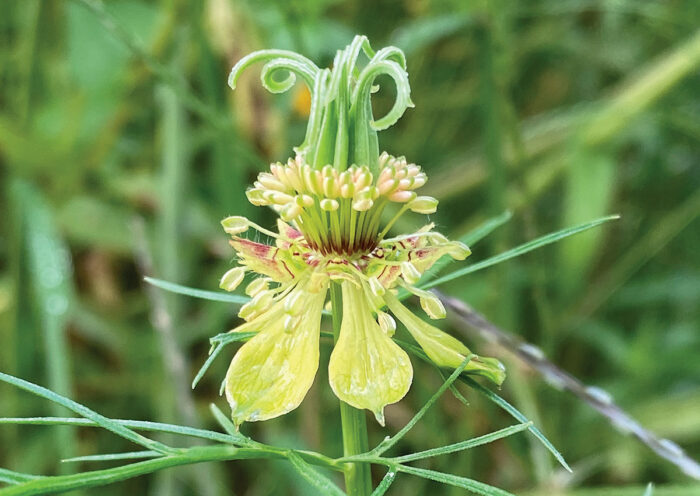
At a glance, the most commonly grown love-in-a-mist (Nigella damascena and cvs., annual) is just a charming little cottage garden annual, with spidery foliage and whirligig flowers in pastel shades of blue, pink, and white. But look a little closer and you’ll see how wacky they really are, like jellyfish in tutus doing headstands. Their seedpods are just as compelling—balloon-like and often striped with purple, surrounded by a cage of needle-like foliage. Fascinating!
You’d think that the genus Nigella couldn’t get any more interesting than that, but then ‘Transformer’ yellow fennel flower comes along. This even-more-otherworldly Nigella sets the stage with five large citron-yellow sepals topped with a smaller layer of burgundy-banded petals. Then things get really wild with a ruff of short chartreuse filaments with yellow anthers and a fountain of green, long-beaked ovaries. The first flower to appear in our test garden last summer almost went unnoticed, but once we spotted it, we were transfixed.
‘Transformer’ grows taller and a bit more upright than others in the genus Nigella, and its subtle colors might get lost in the sea of a mixed bed if not given a prominent spot. But that’s OK, because these blooms, borne on straight stems, are really meant for cutting. In a vase, up close and personal, is where they get the most praise and attention. Truly, you would expect to see Captain Kirk give a posy of these blooms to his latest comely conquest on some faraway alien world. Left to mature on the plant, the seed heads that follow the flowers are a fascinating fluted circle of reflexed, spiked wings, like zany court jesters’ hats. They are wonderful both fresh and dried, when they fade to ivory.
In a garden bed, ‘Transformer’ is a stunning companion to honeywort (Cerinthe major ‘Purpurascens’, annual) and ornamental grasses, while in a vase it acts as a fascinating filler with any big-flowered zinnias (Zinnia elegans and cvs., annual) and as an unexpectedly perfect partner to tall verbena (Verbena bonariensis and cvs., Zones 7–11).
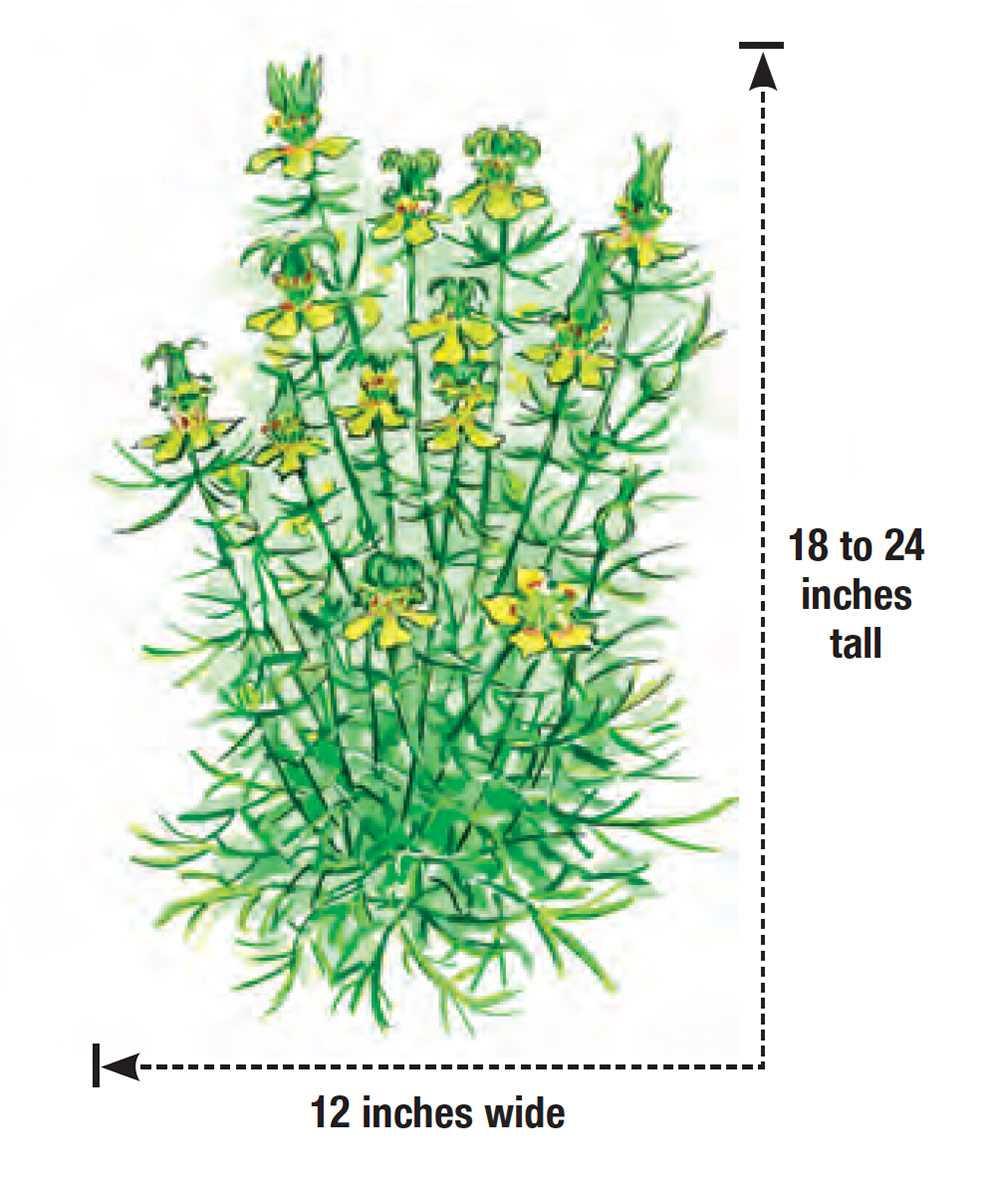
This genus dislikes root disturbance, so direct-sow seeds in early spring. They may take up to three weeks to germinate, but their seedlings are easy to recognize, so they won’t get lost among early spring weeds. Thin the seedlings to 9 to 12 inches apart, and water occasionally once established. They don’t mind lean, sandy soil, but they won’t resent a bit of fertilizing either. They will begin to flower two to three months later. Cutting stems for bouquets encourages more to follow, while leaving some flowers to mature to dried seedpods on the plant encourages self-sowing.
‘Transformer’ yellow fennel flower
Nigella orientalis ‘Transformer’
Zones: Annual
Conditions: Full sun; well-drained soil
Native range: Mediterranean, western Asia
Michelle Gervais is the horticulturist, editor, photographer, and resident seed-sowing fanatic at John Scheepers Kitchen Garden Seeds in Bantam, Connecticut. She is the author of Design-Your-Garden Toolkit: Visualize the Perfect Plant Combinations for Your Yard.
Sources
- John Scheepers Kitchen Garden Seeds, Bantam CT; 860-567-6086; kitchengardenseeds.com
- Select Seeds, Union, CT; 800-684-0395; selectseeds.com
Fine Gardening Recommended Products
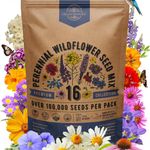
Organo Republic 16 Perennial Wildflower Seeds Mix for Indoor & Outdoors
Fine Gardening receives a commission for items purchased through links on this site, including Amazon Associates and other affiliate advertising programs.
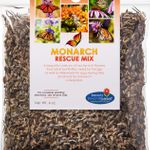
Monarch Butterfly Rescue Wildflower Seeds 4 oz.
Fine Gardening receives a commission for items purchased through links on this site, including Amazon Associates and other affiliate advertising programs.
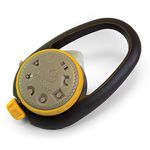
Nelson Multi-Pattern Stationary Sprinkler
Fine Gardening receives a commission for items purchased through links on this site, including Amazon Associates and other affiliate advertising programs.
- Impact-resistant, plastic base
- Soft grip on multi-pattern head



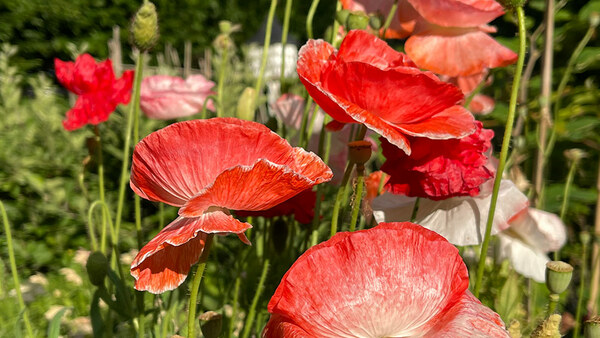















Comments
Log in or create an account to post a comment.
Sign up Log in